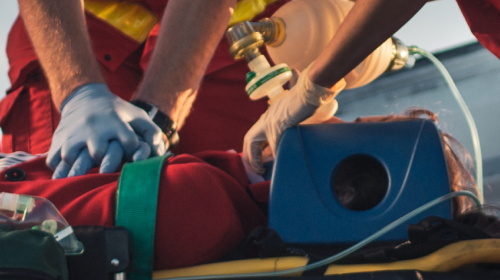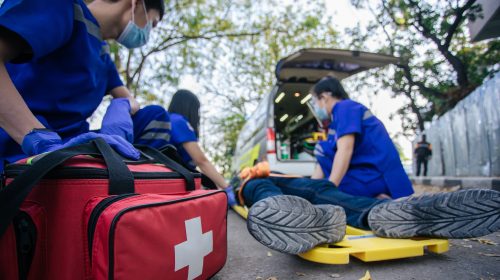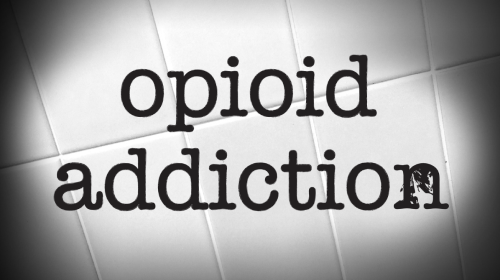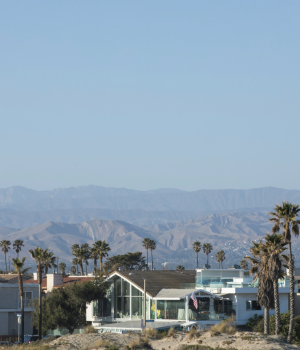Expert Insights
Dr.Tipu Khan says, for the first time ever, he’s doing more autopsies on accidental deaths caused by fentanyl now than natural deaths.In Oxnard, he says that back in 2016, there were only 116 overdose deaths. In 2021, however, there were as many as 270 in the area. That’s an astounding 132% increase in just over five years. And again, fentanyl is to blame. Dr. Khan says that the drug wasn’t really a big deal until after the Covid pandemic. I think the link is obvious and undeniable at this point.
~ Natalie Baker
Cost of Drug Rehab in Oxnard
 The cost of alcohol and drug rehab in Oxnard depends on numerous variables, such as where the facility is located and what the cost of living is in that area. Some addiction treatment centers provide all your daily needs while you engage in 24/7 therapy in an inpatient program, including meals and a place to stay away from home. Other programs offer fewer services, most or all of which are generally covered by health insurance.
The cost of alcohol and drug rehab in Oxnard depends on numerous variables, such as where the facility is located and what the cost of living is in that area. Some addiction treatment centers provide all your daily needs while you engage in 24/7 therapy in an inpatient program, including meals and a place to stay away from home. Other programs offer fewer services, most or all of which are generally covered by health insurance.
There are various ways to pay for care, such as your job-provided health insurance or by starting a crowdfunding page. You could also try to finance your recovery, some Oxnard alcohol rehabs offer payment plans or have access to scholarships for people with no other way to pay for treatment.
Low-Cost and Free Drug Rehab Centers in Oxnard
State-funded rehabs help people without insurance and little funds to pay for care. They’re funded by federal, local, and non-profit agencies across the country dedicated to helping battle addiction.
If you have an income lower than federal poverty standards, then you probably qualify for state-funded programs near you. Call your local health and human services office to be referred to a low-cost drug rehab in Oxnard, or ask your healthcare provider for a substance use assessment and a referral to a local low-cost or free rehab.
Does Insurance Cover Rehab Center Costs?
Insurance companies must cover the cost of substance use disorder (SUD) treatment under laws created under the Affordable Care Act (ACA) and SB-855. Every insurance company has different network providers and policies regarding covered treatments and co-payments. Call the number on the back of your insurance card to speak with an agent. They’ll be able to tell you your plan details and financial obligations.
Medicaid
For people with incomes less than federal poverty standards, Medicare is available to offer free healthcare services. This includes coverage for SUD care received in Oxnard detox centers and drug rehab centers. In California, Medicare is called Medi-Cal, and while it doesn’t typically cover inpatient rehab, it may pay for hospitalization for medical detox.
Medicare
Medicare is a federal health insurance program for those age 65 and older or those who have a disability. Unlike Medicaid, this program has a range of deductibles, co-pays, and other fees. The program covers inpatient hospitalizations, with a rising deductible after 90 days that continue to rise incrementally the longer you’re hospitalized.
Medicare also pays for services received while in residential rehab and outpatient programs. This includes medication and evidence-based treatments such as talk therapy with an addiction specialist.
Private Insurance
Private health insurance is usually offered by a company to their employee, but if you don’t have job-provided insurance, then you can enroll for a plan on the health insurance open marketplace. Popular insurance companies in California include Humana, Cigna, Aetna, and Blue Cross Blue Shield. There are annual enrollment periods, and certain life events, such as the birth of a child, qualify you for a personal enrollment period.
Just like state-funded health insurance, private insurance companies must pay for medically necessary treatments, such as those related to SUD. This includes therapy, medication, and case management. If you have private health insurance, call the number on the back of your insurance card to ask a representative about your plan details.
Oxnard, CA, Alcohol and Drug Use Statistics
The U.S. Drug Enforcement Administration and the Centers for Disease Control and Prevention keep track of the direct impact of drug and alcohol use in different localities. Here are some recent statistics about Ventura County, where the city of Oxnard is located:1,2

The rate of drug overdose deaths rose nearly 40% from 2018 to 2020

Alcohol-related deaths also increased during that time by almost 30%

Ventura County had the 12th highest rate of alcohol-related deaths in 2020.

The DEA found that, in 2019, the drug fentanyl posed the worst threat in the Oxnard area
Drug and Alcohol Laws in California
Due to the rising crime and overdose deaths related to drug and alcohol use in the state, California has several policies in place to help citizens seek alcohol and drug rehab in California.
SB-855 Health Insurance Bill: The SB-855 bill enables greater access to SUD treatment.10 This includes requiring health insurance companies to pay for services provided in rehabs and prohibits discrimination against those with a SUD or mental health disorder by insurance companies as well as employers.
Proposition 36 Jail Diversion Program: Proposition 36 enables people that commit low-level drug-related crimes to be admitted into a rehab program and on probation instead of spending an extended time in jail.11 If you qualify for this program, your attorney or public defender will let you know.
AB-472 Good Samaritan Overdose Law: The Good Samaritan Overdose law was created to encourage people to seek emergency services if they witness or experience an overdose.12 It provides a level of protection against legal prosecution if you’re found to be carrying or using illegal substances, as long as you provide full cooperation with first responders.
California Family and Medical Leave Law: Mirroring the federal Family and Medical Leave Act (FMLA), California’s leave laws require most companies to provide a minimum of 12 weeks of unpaid leave to employees to address medical issues, including substance use disorder.13 Companies with less than 50 employees or those in a location with few employees in the area may not be required to follow this law.
Addiction Treatment Settings
Inpatient and outpatient programs offer similar services in vastly different care settings. The inpatient option offers a new way of life and a place to stay while you recover, while the outpatient option provides community support and clinic-based treatments that let you return home afterward.
Inpatient
If you want to completely leave behind the temptations and stress you experience in your daily life, enroll in an inpatient rehab center. These facilities offer evidence-based and alternative therapies, support groups, three meals a day, and a comfortable room. Different facilities also have a range of amenities, with some providing on-site fitness centers and office space for working professionals.
Depending on the severity of your addiction, you may also need a medical detox. A team of professionals will help keep you safe and comfortable while managing your withdrawal symptoms.
Outpatient
While in outpatient rehab, you can go about your daily activities while participating in therapy. You visit your clinic once or twice a day, participate in group and individual therapy sessions, and take medication as prescribed in your recovery plan.
Depending on your level of needs on the continuum of care, you can go to a partial hospitalization program (PHP) instead of inpatient rehab, visiting the treatment center for several hours a day at a time that varies by location. Different rehabs have different schedules, with some of them offering multiple times for daily therapy to offer the most convenience to clients.
If your needs aren’t as high, you can attend an intensive outpatient program (IOP) that requires a minimum of 9 hours of therapy per week, with supplemental phone calls and other telehealth care services throughout the month.3 You can also step down in care to a standard outpatient program (SOP) that requires only one or two visits per week.
Specialized Drug Rehabs in Oxnard
Depending on your background and preferences, you might enjoy rehab better in a facility designed for people with the same tastes and needs.
Holistic
A holistic treatment center usually offers more alternative rehabs than other centers, with a heavy focus on nature and fitness. They tend to provide a variety of exercise programs, including outdoor yoga, tai chi, and meditation practices. They might also offer organic and vegan meal options.
Faith-Based and Christian
Faith-based rehabs facilitate spiritual healing along with physical addiction, with methods that vary depending on the religion of their clients. Common services include pastoral counseling, prayer circles, and denomination-based services like communion.
Luxury
Luxury rehabs tend to offer a higher caliber of amenities, with alternative therapies such as equine and massage therapy. These centers usually provide the plushest living quarters and help residents create healthy and gourmet meal plans. Luxury rehabs and detox centers in Oxnard tend to cost more than other options, given their higher quality and level of comfort.
Executive
Executive rehabs are made for professionals such as lawyers, doctors, first responders, teachers, and anyone who needs to maintain confidentiality while in care. It’s important to protect your reputation in some fields, and these centers protect client privacy through ways such as not allowing visitors in public rehab spaces and releasing marketing material using the faces of paid actors instead of participants.
Dual Diagnosis
Dual diagnosis centers are for people that have co-occurring mental health disorders and SUD. Addiction and mental health have infinite ways to interact with each other, with compounding factors such as stress worsening the symptoms of both disorders.
Medication-Assisted Treatment
MAT is an addiction recovery tool that provides a medical way to relieve withdrawal symptoms and cravings. It’s used in tandem with intensive therapy, such as cognitive-behavioral therapy (CBT) and other evidence-based treatments. The benefits of MAT include:4
- Better outcomes from your recovery efforts, such as long-term relapse prevention
- A higher success rate in finding and maintaining a steady job
- Healthier pregnancies and babies born to mothers with addiction
MAT is currently only approved to treat alcohol use disorder (AUD) and opiate use disorder, and can only be offered by federally-certified MAT prescribers.
Methadone: Methadone is a full opioid agonist that is FDA-approved to treat OUD.5 It can be prescribed as part of a methadone maintenance plan that includes intensive therapy sessions during treatment. You can enroll in a methadone maintenance plan with a certified prescriber and take the methadone treatments in the office.
Suboxone: A partial opioid agonist medication composed of the chemical buprenorphine, Suboxone is a sublingual film that can relieve opiate withdrawal symptoms. According to the Substance Abuse and Mental Health Services Administration (SAMHSA), there are eight buprenorphine prescribers within 5 miles of Oxnard.6
Naltrexone: Naltrexone is FDA-approved to treat both AUD and OUD and is available in a daily form or an extended-release injection.7 It’s an opiate antagonist, meaning that it blocks the opiate receptors from activating if you consume opioids, making it an effective relapse prevention tool.
Antabuse (Disulfiram): Antabuse is FDA-approved to combat AUD, helping to lessen cravings to drink by making it very uncomfortable to consume alcohol while you’re on the medication. It works by preventing your body’s natural ability to process alcohol, causing a cascade of symptoms akin to a hangover as soon as you take a drink.
Acamprosate: FDA-approved to treat AUD, Acamprosate is a daily medication that lowers the cravings and urges to drink alcohol.9 This medication can be prescribed by a certified MAT provider and used while undergoing addiction therapy, such as in an outpatient rehab program.
Should You Travel for Drug and Alcohol Rehab in Oxnard?
 People love the lower west coast for its tropical feel and bounty of natural beauty and things to do. If you have health insurance that extends to providers in California or can finance treatment, this is a great smaller city near Los Angeles and Long Beach. It’s important to have a strong support system while attending rehab, so it makes sense to travel here if you have friends or family in the area to lean on while you recover.
People love the lower west coast for its tropical feel and bounty of natural beauty and things to do. If you have health insurance that extends to providers in California or can finance treatment, this is a great smaller city near Los Angeles and Long Beach. It’s important to have a strong support system while attending rehab, so it makes sense to travel here if you have friends or family in the area to lean on while you recover.
When thinking about traveling to seek drug rehab in Oxnard, look into the different sections of the town that you could live in. If you want to live as close to L.A. and Long Beach as possible, look into the southeast part of town, in the College Estates, Oxnard Pacific, and Cypress Garden neighborhoods. This area is also home to plenty of large shopping centers and fun activities to do when you aren’t in therapy.
Beach lovers will want to live close to the coast. The farthest west part of Oxnard has the Marina West and Sea View Estates neighborhoods, Sea Air Park, Sea View Park, and other local places to play outside.
Downtown Oxnard, with the Five Points Northeast neighborhood, has plenty of shopping and dining, as well as car enthusiast hotspots, The Murphy Auto Museum and the Mullin Automotive Museum. In addition, students may want to explore the east side of town, with both Laurus College Oxnard in the north and Oxnard College in the south.
Resources
- FindTreatment.gov. (n.d.). FindTreatment.gov.
- Drug Enforcement Agency. (2022). Operation Engage Southern California.
- Center for Disease Control. (2022). Drug Overdose Mortality by State. CDC Wonder.
- Center for Substance Abuse Treatment. Substance Abuse: Clinical Issues in Intensive Outpatient Treatment. Rockville (MD): Substance Abuse and Mental Health Services Administration (US); (2006). Chapter 3. Intensive Outpatient Treatment and the Continuum of Care.
- Substance Abuse and Mental Health Services Administration. (2022). Medication-Assisted Treatment.
- Substance Abuse and Mental Health Services Administration. (2022). Methadone.
- Substance Abuse and Mental Health Services Administration. (2022). Buprenorphine.
- Substance Abuse and Mental Health Services Administration. (2022). Naltrexone.
- National Alliance on Mental Illness. (2022). Antabuse.
- National Alliance on Mental Illness. (2022). Acamprosate.
- California Legislative Information. (September 9, 2020). SB-855 Health Coverage: Mental Health or Substance Use Disorders.
- California State Legislative Analyst’s Office. (2000). Proposition 36. Drug Treatment Diversion Program. Initiative Statute.
- California Legislation. (2011-2012). AB-472 Controlled substances: overdose: punishment.
- Employment Development Department. (2022.) Family and Medical Leave Act and California Family Rights Act FAQs.



